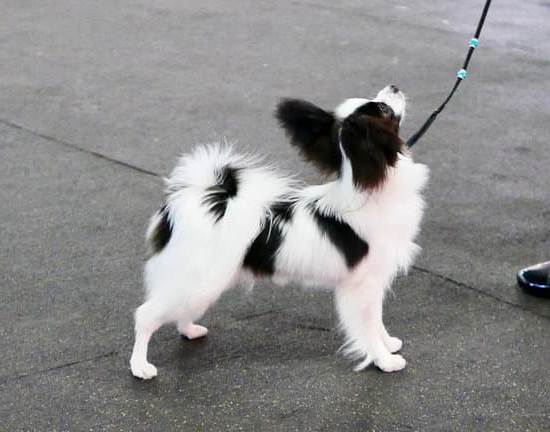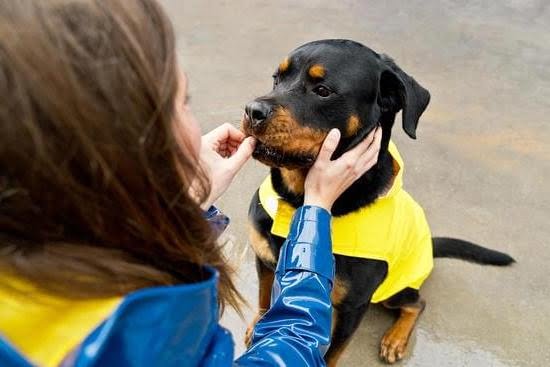Are you wondering how to train a dog to retrieve items? Retrieving is a natural behavior for many breeds, and with the right training, your furry friend can become an expert at fetching and returning objects on command. In this article, we will break down the process of teaching your dog to retrieve items, from understanding the concept of retrieving for dogs to maintaining and practicing their skills for long-term success.
To start off, it’s important to understand the concept of retrieving for dogs. This involves tapping into their natural instincts and turning it into a trained behavior that can be reliably performed in different environments. By understanding what drives your dog to retrieve, you can effectively tailor your training methods to suit their individual needs and preferences.
The first step in training your dog to retrieve items is choosing the right objects for them to fetch. From there, you will build the foundation by teaching them how to fetch through positive reinforcement and rewards.
Then, you will introduce and reinforce the command “retrieve” before troubleshooting common challenges and gradually increasing the difficulty of retrievals. Finally, you will take the training to the next level by teaching your dog to retrieve specific items or in different environments, as well as expanding their skills by retrieving on command from a distance.
Choosing the Right Items to Train Your Dog to Retrieve
When it comes to training your dog to retrieve items, choosing the right items is crucial for success. Here are some tips on selecting the appropriate items for retrieval training:
- Size and Weight: Start with lightweight and easily manageable items that are not too big for your dog to carry. As your dog becomes more proficient in retrieving, you can gradually introduce heavier or larger items.
- Texture: Choose items with different textures such as rubber, fabric, or plastic to accustom your dog to picking up a variety of objects.
- Favorite Toys: Incorporating your dog’s favorite toys can make the training process more enjoyable and motivating for them. It can also help create a positive association with retrieving.
It’s important to remember that not all dogs will have the same preferences when it comes to the items they enjoy retrieving. Some dogs might prefer soft toys, while others may be more inclined towards balls or sticks. Experiment with different types of objects to see what resonates best with your furry friend.
Finally, always ensure that the items you use for retrieval training are safe for your dog to handle and carry. Avoid sharp edges, toxic materials, or anything that could potentially harm your pet during the training process.
By carefully selecting the right items and considering your dog’s individual preferences, you can set the stage for successful retrieval training. With patience and consistency, you can effectively teach your dog how to retrieve various objects on command.
Building the Foundation
Teaching your dog to retrieve items can be a fun and rewarding experience for both you and your furry friend. The first step in training your dog to retrieve is building the foundation, which involves teaching your dog to fetch. This initial step is crucial as it sets the stage for more advanced retrieving training.
To start, choose a toy or object that your dog shows interest in, such as a ball or a favorite stuffed animal. Begin by engaging in play with the item, tossing it a short distance and encouraging your dog to pick it up. Use positive reinforcement, such as praise or treats, when your dog picks up the item and brings it back to you. Repeat this process multiple times until your dog understands the concept of fetching.
Once your dog consistently retrieves the item and brings it back to you, gradually increase the distance of the throws. This will help strengthen your dog’s fetching skills and build confidence in their ability to retrieve items from various distances. Remember to be patient and consistent during this training process, as every dog learns at their own pace.
| Training Stage | Description |
|---|---|
| Engage in Play | Choose a toy or object that interests your dog and engage in play by tossing it a short distance. |
| Positive Reinforcement | Use praise or treats when your dog retrieves the item and brings it back to you. |
| Increase Throw Distance | Gradually increase the distance of throws to strengthen fetching skills. |
Introducing the Command Retrieve and Reinforcing It
Introducing the command “retrieve” is an essential step in training your dog to effectively retrieve items. Once your dog has mastered the concept of fetching, it’s time to associate the action with a specific command. This will not only help your dog understand what is expected of them, but also ensure that they retrieve items on cue.
To introduce the command “retrieve,” follow these steps:
- Choose a quiet and familiar environment for training.
- Hold a favored item or toy in your hand and encourage your dog to take it from you using the fetch command previously taught.
- As your dog takes the item, say “retrieve” clearly and confidently. Repeat this process multiple times, always using the same verbal command.
Once your dog consistently responds to the command “retrieve,” it’s important to reinforce it through positive reinforcement. When your dog successfully retrieves an item after being given the command, make sure to reward them with treats, praise, or playtime as a form of positive reinforcement. This will strengthen their association between the command and the action of retrieving items.
- Remember to be patient and consistent as you reinforce the “retrieve” command, and always use positive reinforcement to motivate your dog.
- Consistent practice with appropriate rewards will help solidify this behavior in your dog’s training.
By introducing and reinforcing the “retrieve” command using these methods, you can set a strong foundation for successful retrieving training with your dog.
Using Positive Reinforcement and Rewards to Encourage Successful Retrievals
Understanding the Power of Positive Reinforcement
Positive reinforcement is a powerful tool when it comes to training your dog to retrieve items. By rewarding your dog for successfully retrieving an item, you are reinforcing this behavior and increasing the likelihood that your dog will continue to perform the desired action. This can be done through verbal praise, treats, or toys that your dog finds rewarding.
Implementing Rewards in Retrieval Training
When teaching your dog to retrieve, it’s important to use rewards effectively. Start by using high-value treats or toys that your dog finds particularly enticing. When your dog successfully retrieves an item, immediately reward them with praise and a treat. This will help them make a positive association with retrieving and encourage them to continue performing the behavior.
Consistency Is Key
Consistency is key when using positive reinforcement in retrieval training. Make sure to reward your dog every time they successfully retrieve an item, especially in the early stages of training. As your dog becomes more proficient at retrieving, you can gradually reduce the frequency of rewards, but it’s important to continue reinforcing the behavior consistently.
When training a dog to retrieve items, positive reinforcement and rewards play a crucial role in encouraging successful retrievals. By understanding the power of positive reinforcement, implementing rewards effectively, and maintaining consistency, you can help your dog develop strong retrieval skills and build a strong foundation for more advanced training in the future.
Troubleshooting Common Challenges in Retrieving Training
When training a dog to retrieve items, it is common to encounter challenges that can hinder the progress of the training. One of the most common challenges is when a dog shows disinterest in fetching or retrieving items. This can be addressed by making the process more engaging and rewarding for the dog. Using their favorite toys or treats as objects to retrieve can help increase their motivation.
Another challenge that may arise is a dog’s reluctance to release the retrieved item. This can be due to possessiveness or lack of proper understanding of the command to release. To address this, it is important to teach the “drop” or “release” command separately from the retrieving process. This can be done by offering a reward in exchange for releasing the item, gradually reducing the need for a treat each time.
Additionally, some dogs may struggle with understanding the concept of returning directly to their owner after retrieving an item. They may either drop the item along the way or run off in another direction. This can be tackled by using a long line or leash during initial training sessions to guide them back to you after retrieving an item, gradually phasing out the need for it as they become more reliable in returning directly to you.
| Common Challenge | Solution |
|---|---|
| Disinterest in fetching/retrieving items | Using favorite toys or treats as objects for retrieval; making process more engaging |
| Reluctance to release retrieved item | Teaching “drop” or “release” command separately; rewarding release with treats initially |
| Difficulty in returning directly after retrieval | Using long line or leash during initial training; gradually phasing out its use as reliability increases |
Gradually Increasing the Difficulty of Retrievals
Adding Distractions
As your dog becomes more proficient in retrieving items, it’s important to gradually increase the difficulty of the retrievals. One way to do this is by adding distractions to the training environment. Start by introducing mild distractions, such as a few people walking around or other pets playing nearby. Once your dog can retrieve items without getting too distracted, you can gradually increase the level of distractions.
Introducing Different Types of Items
Once your dog has mastered retrieving a specific type of item, such as a ball or toy, it’s time to introduce different types of items. This could include soft toys, hard toys, and even everyday items like keys or a wallet. Each new type of item will challenge your dog in different ways and help them generalize the skill of retrieving to different objects.
Working in Various Environments
Another way to increase the difficulty of retrievals is by practicing in various environments. Start by working in different rooms of your home, then gradually progress to outdoor spaces such as parks or even busy streets (always keeping safety in mind). By practicing retrievals in different environments, you’ll help your dog learn to focus and retrieve regardless of the surroundings.
By gradually increasing the difficulty of retrievals through these methods, you’ll be able to strengthen your dog’s retrieving skills and prepare them for more advanced retrieval training in the future.
Taking the Training to the Next Level
Training your dog to retrieve items is not only a fun and entertaining activity, but it can also be incredibly practical and useful. Once your dog has mastered the basics of fetching, you can take the training to the next level by teaching your dog to retrieve specific items or in different environments.
This advanced skill will come in handy in various situations, such as when you need your dog to fetch a specific object or when you want them to retrieve an item in a new location.
To begin training your dog to retrieve specific items, start by choosing one particular object that you want them to fetch consistently. This could be their favorite toy, a ball, or any other item that they are familiar with.
Use the same techniques and commands you used during the initial training to reinforce the act of retrieving with this specific item. Be patient and consistent as you work with your dog, offering plenty of positive reinforcement and rewards for successful retrievals.
Once your dog has mastered retrieving specific items in familiar surroundings, it’s time to introduce them to different environments. Start by practicing in slightly different locations within your home or backyard before gradually exposing them to new environments such as parks or other outdoor areas. Remember to use the same commands and rewards as before while gradually increasing the difficulty level.
With time and practice, your dog will become more adept at retrieving items in a variety of settings. Remember that consistency and patience are key when taking their skills to new heights.
Expanding the Skills
Teaching your dog to retrieve items is not only a valuable skill, but it can also be a fun and rewarding activity for both you and your furry friend. Once your dog has mastered the basics of fetching and retrieving items, you can begin to expand their skills by teaching them to retrieve on command from a distance.
This advanced skill can be particularly useful in obedience training and in situations where you may need your dog to retrieve an item from afar.
To start training your dog to retrieve on command from a distance, it’s important to first ensure that they have a strong foundation in basic fetch and retrieval skills. This includes understanding the command “fetch,” bringing the item back to you, and releasing it into your hand or at your feet. Once this foundation is solid, you can begin introducing the concept of retrieving on command from a distance.
One effective way to teach this skill is to gradually increase the distance between you and your dog when asking them to retrieve an item. Start by standing just a few feet away and using the command “fetch” as they go for the item.
As they become more comfortable with this distance, gradually move farther away, always reinforcing the command “fetch” as they bring the item back to you. Consistent practice, positive reinforcement, and patience are key in mastering this advanced retrieval skill.
It’s important to remember that every dog learns at their own pace, so be patient and consistent with the training process. With time and dedication, your dog will learn how to retrieve items on command from a distance, adding another impressive skill to their repertoire.
Maintaining and Practicing Retrieving Skills for Long-Term Success
In conclusion, training a dog to retrieve items can be a rewarding and enjoyable experience for both the owner and the pet. By understanding the concept of retrieving for dogs and choosing the right items to train them with, owners can build a strong foundation for this skill. Teaching a dog to fetch and introducing the command retrieve are crucial initial steps in the process. Using positive reinforcement and rewards, along with troubleshooting common challenges, will help reinforce successful retrievals.
As the training progresses, it is important to gradually increase the difficulty of retrievals and eventually take the training to the next level by teaching a dog to retrieve specific items or in different environments. Expanding on these skills may involve teaching a dog to retrieve on command from a distance, which demonstrates advanced proficiency in this area.
Moreover, maintaining and practicing retrieving skills is crucial for long-term success. Consistent practice will help solidify the training and keep the dog engaged and obedient in retrieving items. With dedication and patience, any owner can successfully train their dog to retrieve items using these proven methods mentioned above.
Frequently Asked Questions
How Do I Teach My Dog to Retrieve Things?
Teaching your dog to retrieve things can be a fun and rewarding process. Start by using a toy or item that your dog is interested in, then encourage them to pick it up and bring it back to you with positive reinforcement. Gradually increase the distance and add cues to the command.
Can Any Dog Be Taught to Retrieve?
While most dogs have the natural instinct to retrieve, not all of them will easily learn this skill. Breeds like Retrievers, Labradors, and Spaniels are known for their retrieving abilities, but with patience and persistence, almost any dog can be taught to retrieve.
How Do I Train My Dog to Pick Up Things?
To train your dog to pick up things, start by teaching them basic commands like “take it” and “drop it.” Use toys or items they are familiar with and reward them when they successfully pick it up. As they become more comfortable, introduce new items and continue practicing the commands until they become second nature for your dog.

Welcome to the blog! I am a professional dog trainer and have been working with dogs for many years. In this blog, I will be discussing various topics related to dog training, including tips, tricks, and advice. I hope you find this information helpful and informative. Thanks for reading!





